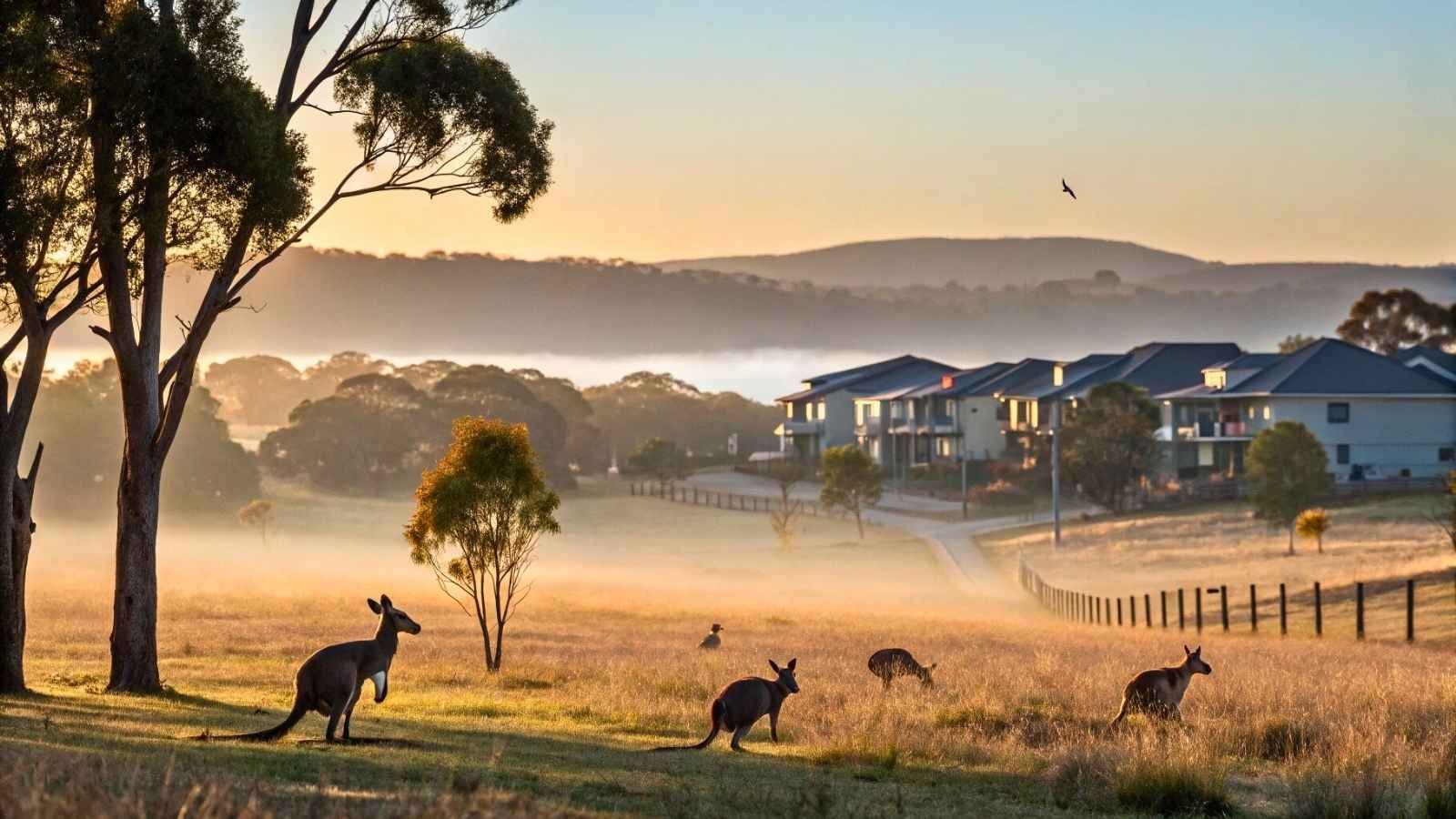
You’re standing at a crosswalk, waiting for the light to change, then a herd of wild animals strolls by like it’s the most normal thing in the world. No fences, no warning signs—just raw, unfiltered nature blending into city life like it belongs there.
These aren’t zoo escapes or rural flukes. They’re real, everyday moments in places where animals have never truly left. It’s thrilling, a little bizarre, and weirdly beautiful. If you’ve ever wanted your morning coffee with a side of wildlife drama, this list is for you. Get ready to explore cities where the wild refuses to stay wild.
1. India

India is wild in the most literal sense. Walk through almost any city—from Jaipur to New Delhi—and you’re likely to cross paths with monkeys on rooftops, cows blocking traffic, or elephants lumbering down suburban roads. It’s not an occasional sight; it’s woven into the rhythm of daily life. Cows, especially, are sacred in Hindu culture, so you’ll see them napping in the middle of roads with cars nonchalantly swerving around them.
In smaller cities like Udaipur or Varanasi, the wildlife encounters get even more frequent. Packs of street dogs mingle with langurs leaping over balconies. In the rural fringes, leopards are known to wander into villages, especially near forested zones like Rajasthan. And if you’re around the Western Ghats or the outskirts of Bengaluru, elephant sightings aren’t unheard of.
It’s this coexistence between the modern and the primal that makes India’s urban wildlife scenes truly surreal. It’s one thing to see wildlife in national parks. It’s another to sip your chai while a troop of monkeys stares at you like they own the place (and they kind of do).
Quick Facts:
- Best Months to Visit: October to March (cooler, drier weather)
- Most Common Urban Wildlife: Cows, monkeys, elephants, peacocks, leopards
- Cities with Frequent Sightings: Jaipur, Varanasi, Rishikesh, Bangalore, Guwahati
- Travel Tip: Be cautious around monkeys—they’re bold and love snatching food.
2. South Africa
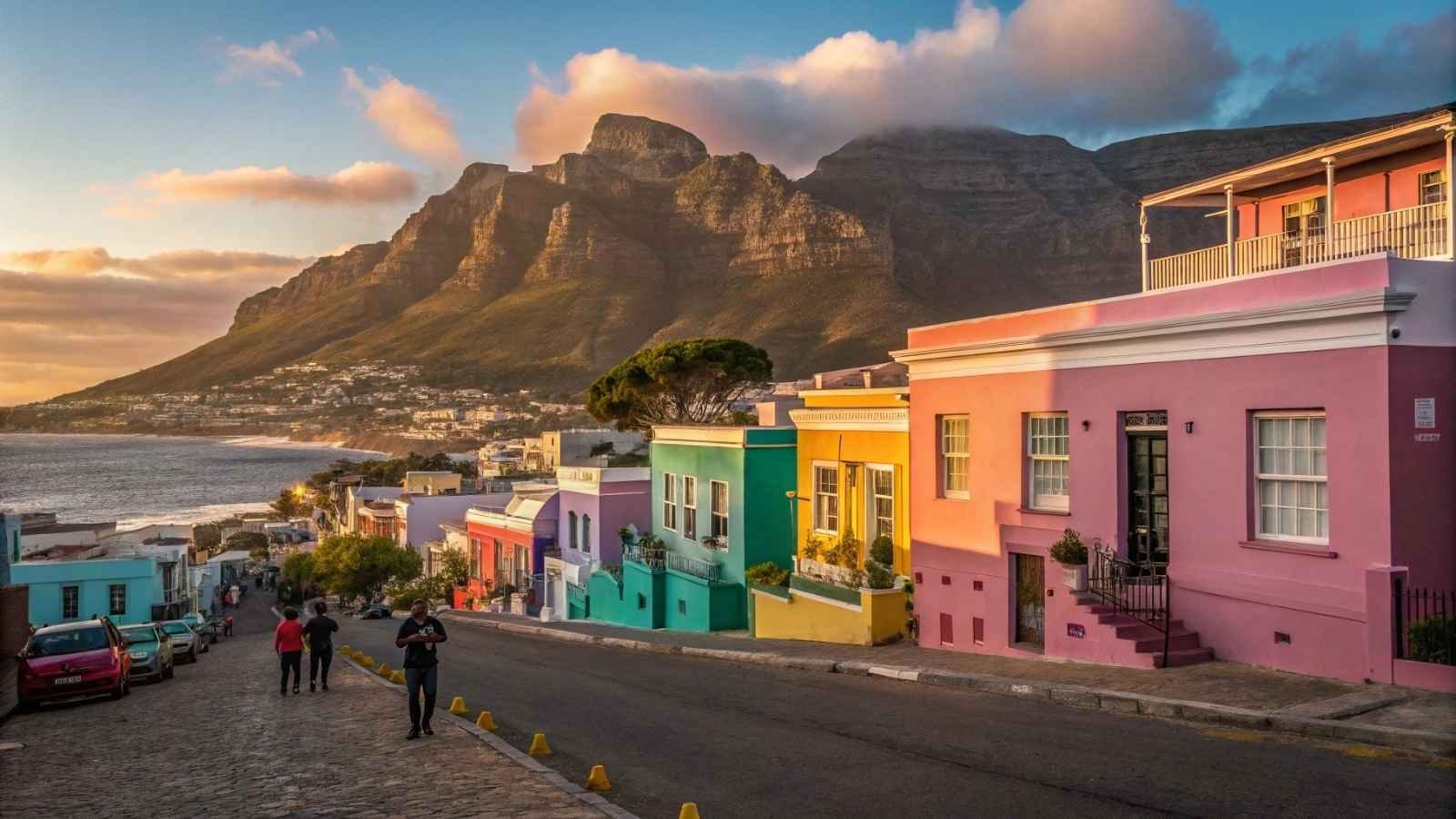
If you think city life and wildlife don’t mix, South Africa will change your mind fast. In Cape Town, baboons are notorious for raiding picnic baskets and entering homes through open windows. There’s even a special “Baboon Monitor” unit to manage human-animal interactions. In suburban areas bordering the mountains, penguins waddle across roads and ostriches strut like they’re on a catwalk.
One of the most famous scenes plays out in Simon’s Town, where African penguins stroll along sidewalks and lounge on beaches. It’s charming until they block traffic—and they do. In the coastal city of Durban, vervet monkeys are a common sight, often seen climbing telephone wires like urban acrobats.
What sets South Africa apart is the sheer range of species sharing space with people. Even near Kruger National Park, it’s not unusual to see zebras or impalas on the town’s edges. It’s a country where nature doesn’t retreat—it mingles.
Quick Facts:
- Best Months to Visit: May to September (dry season, good wildlife spotting)
- Most Common Urban Wildlife: Baboons, penguins, ostriches, monkeys
- Cities with Frequent Sightings: Cape Town, Simon’s Town, Durban, Nelspruit
- Travel Tip: Don’t feed the animals—especially baboons. They remember faces.
3. Australia

Australia has a strange sense of humor when it comes to wildlife—kangaroos crossing suburban driveways, emus strutting through gas stations, and koalas clinging to backyard trees. In places like Canberra and Alice Springs, kangaroos are so common in city parks that locals refer to them as neighbors. And in Tasmania, you’ll sometimes see wombats plodding down the street like fuzzy tanks.
Birds are part of the drama, too. Cockatoos and rainbow lorikeets frequently cause chaos on balconies and picnic tables. Some cities even have regular “emu traffic” updates when large birds decide to go on a neighborhood stroll.
Australia’s urban wildlife feels less like a surprise and more like a stubborn fact of life. Locals are used to sharing their lawns and roads, but for visitors, the blend of cityscape and bush creatures is endlessly thrilling—and slightly surreal.
Quick Facts:
- Best Months to Visit: March to May, September to November (mild weather)
- Most Common Urban Wildlife: Kangaroos, emus, koalas, wombats, possums
- Cities with Frequent Sightings: Canberra, Alice Springs, Adelaide Hills, Hobart
- Travel Tip: Drive cautiously near dusk—kangaroo collisions are common.
4. Thailand
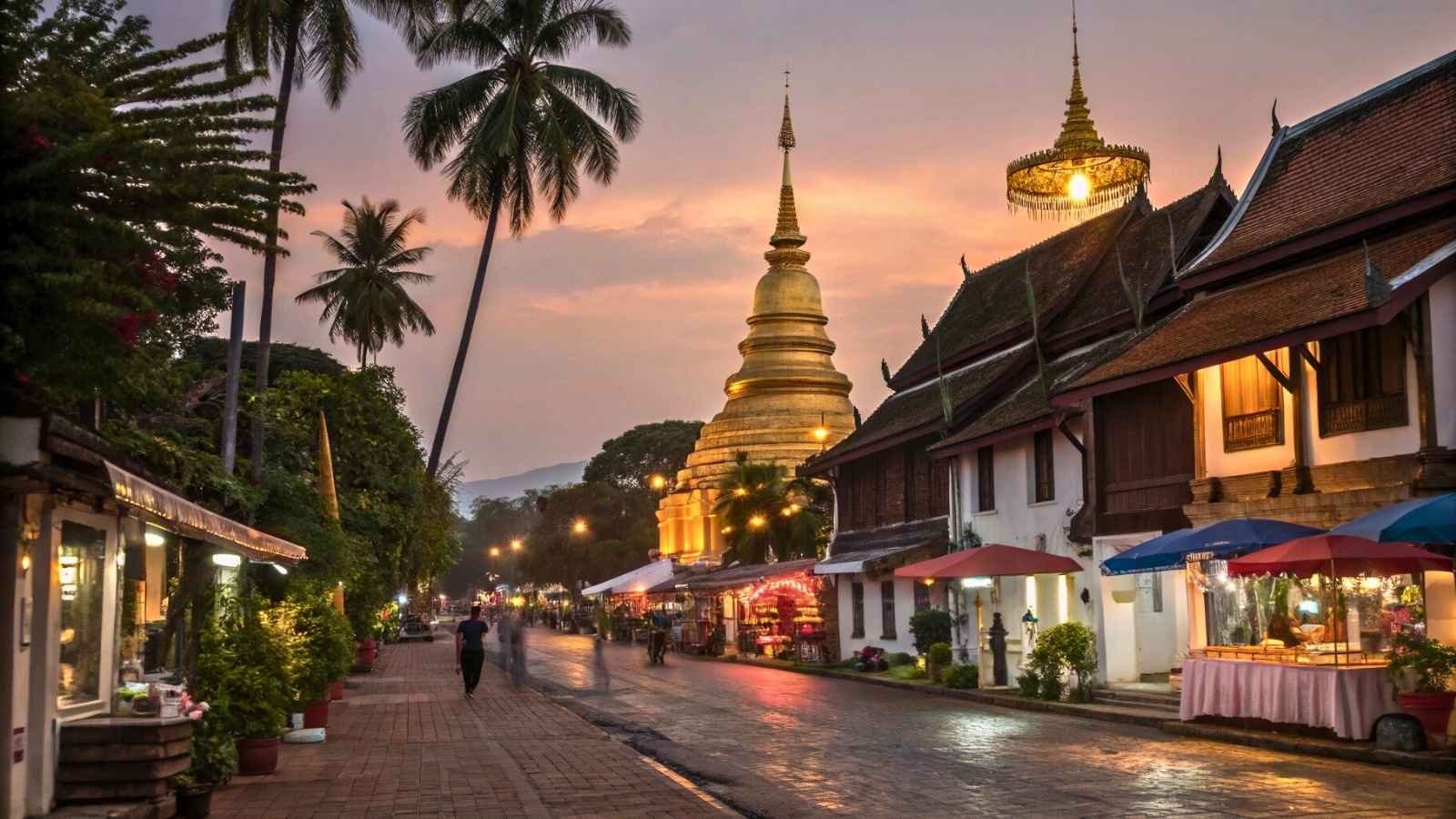
Thailand isn’t just known for temples and beaches—it’s also one of the few places where urban elephants are part of the landscape. In cities like Chiang Mai or even Bangkok’s outskirts, you might witness elephants being led through traffic by their handlers. Though controversial and often connected to tourism, it’s still a part of urban life in some regions.
But elephants aren’t the only stars. In places like Lopburi, the city is practically ruled by monkeys. Troops of macaques swarm marketplaces, perch on power lines, and steal snacks straight out of tourist bags. The annual Monkey Buffet Festival (yes, that’s a real thing) turns the whole city into a bizarre celebration of human-monkey relations.
Thailand’s mix of reverence for animals and daily chaos creates an experience that’s both heartwarming and wild, sometimes literally.
Quick Facts:
- Best Months to Visit: November to February (cool, dry season)
- Most Common Urban Wildlife: Elephants, macaques, monitor lizards
- Cities with Frequent Sightings: Lopburi, Chiang Mai, Hua Hin
- Travel Tip: Keep your bags zipped—monkeys are clever pickpockets.
5. Canada
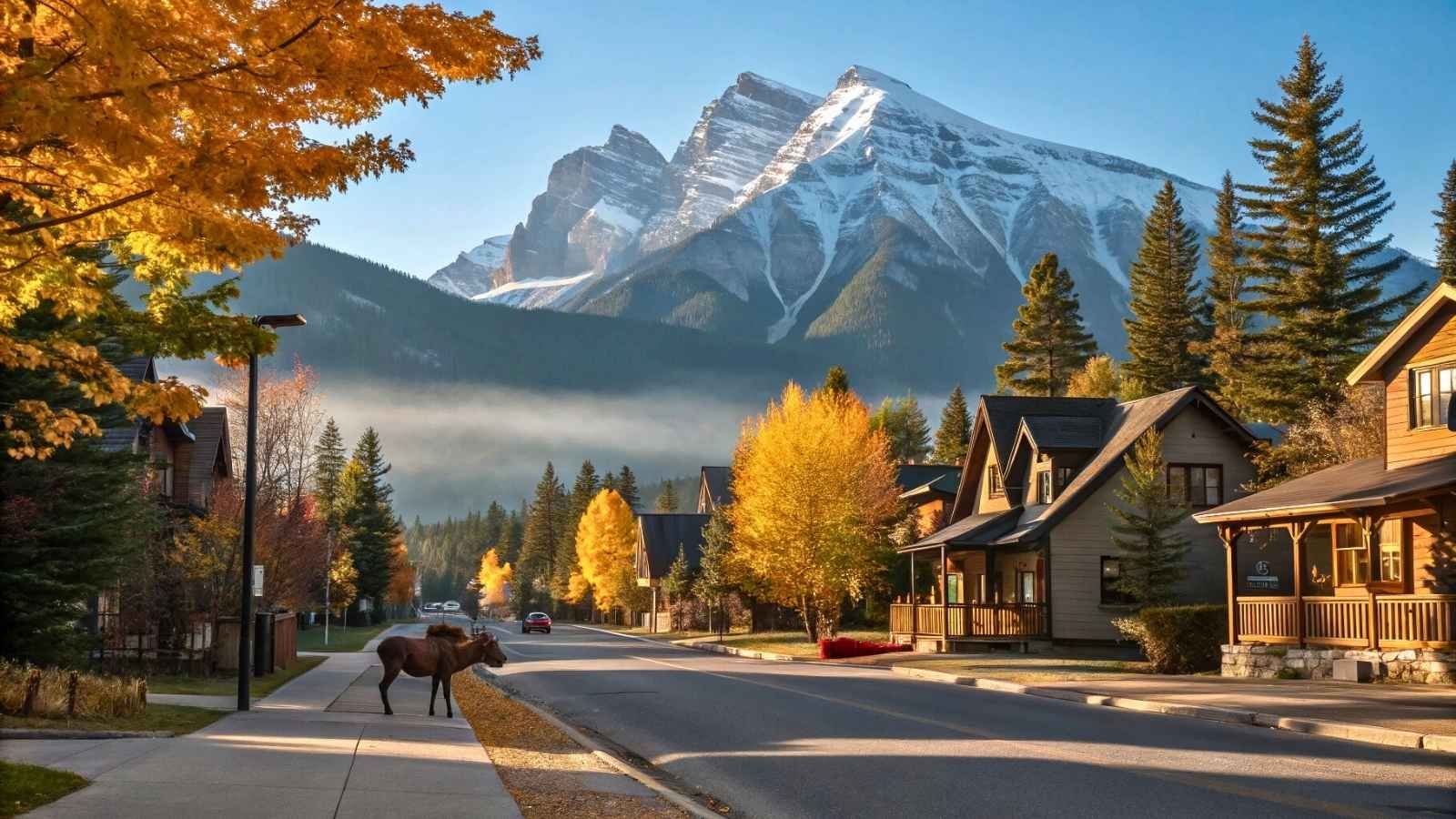
Canada’s cities might seem calm and orderly, but step outside a little—or even glance down a quiet alley—and the wild shows up. In places like Banff and Jasper, elk and deer wander down main streets, especially in winter. And in northern towns, it’s not unheard of for bears to pop up near backyards, sniffing around for trash.
Vancouver and Toronto suburbs often deal with raccoons and skunks, while coyotes are increasingly spotted trotting down sidewalks or even catching the occasional bus (yes, there are photos). But perhaps the most surreal are the moose sightings in Newfoundland towns, where the sheer size of these creatures makes your car feel like a toy.
Canada’s wildlife feels both majestic and oddly casual—like they’ve been here all along, just letting you borrow the place for a while.
Quick Facts:
- Best Months to Visit: May to September (mild weather and animal activity)
- Most Common Urban Wildlife: Moose, elk, raccoons, bears, coyotes
- Cities with Frequent Sightings: Banff, Jasper, St. John’s, Vancouver suburbs
- Travel Tip: Never approach moose—they may look calm, but can charge without warning.
6. Kenya
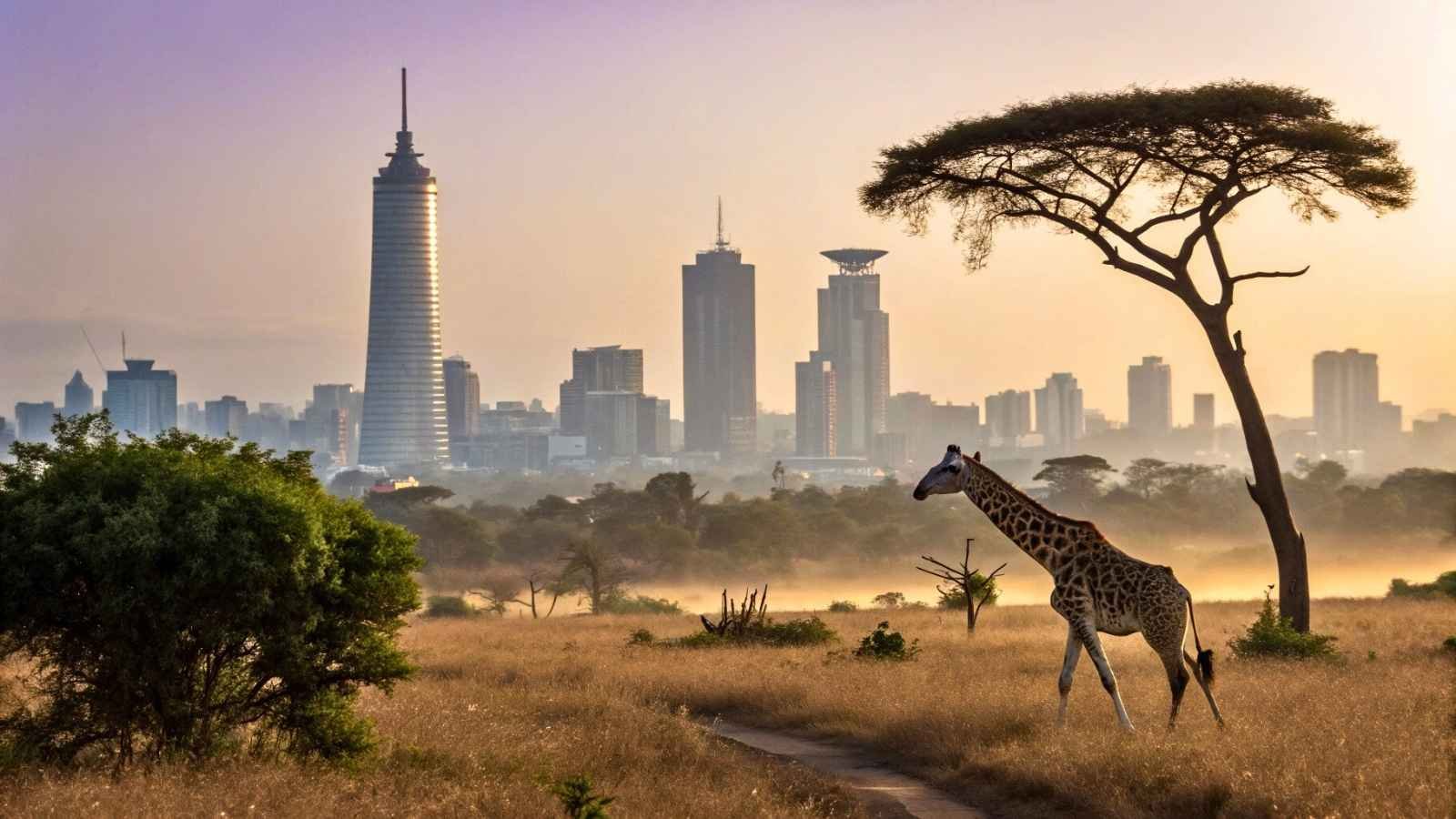
When you think of Kenya, safari parks like the Maasai Mara may come to mind—but Nairobi, the capital, offers its kind of wildlife magic. Nairobi National Park lies just 7 km from the city center, and there’s a highway with zebras and giraffes grazing nearby. It’s the only major city in the world with a full-blown wildlife park within its limits.
Occasionally, animals wander beyond the park boundaries. There have been instances of lions roaming city streets (thankfully rare, but real), and hyenas slinking through Nairobi’s outskirts. Even residents are used to spotting warthogs trotting alongside roads and baboons rifling through bins in nearby suburbs.
What’s striking is the contrast—steel skyscrapers in the background, and in the foreground, giraffes sauntering across open grasslands. It’s a mash-up that has to be seen to be believed.
Quick Facts:
- Best Months to Visit: June to October (dry season and ideal for safaris)
- Most Common Urban Wildlife: Giraffes, zebras, baboons, warthogs, lions (occasionally)
- Cities with Frequent Sightings: Nairobi (especially near Nairobi National Park)
- Travel Tip: Visit the David Sheldrick Wildlife Trust while in Nairobi—it’s a must for elephant lovers.
7. Japan

Japan might be known for its tech and efficiency, but it has a whimsical wildlife side too. In Nara, a city just outside Kyoto, over 1,000 free-roaming deer wander the streets and parks. They’re considered sacred, and the locals even sell special “deer crackers” to feed them. The deer will bow back at you for a treat—it’s polite chaos.
Further north, in places like Shiretoko Peninsula and rural Hokkaido, you might spot foxes, sika deer, and even bears strolling close to towns. But it’s not all countryside. In suburban Tokyo, wild boars have been known to make unexpected appearances, especially during breeding season.
Japan blends order with the unexpected, and nowhere is that clearer than when you’re trying to cross the street and a deer steps out like it owns the crosswalk.
Quick Facts:
- Best Months to Visit: April to June and October to November (mild weather)
- Most Common Urban Wildlife: Deer, wild boars, foxes, monkeys
- Cities with Frequent Sightings: Nara, Nikko, Sapporo outskirts
- Travel Tip: In Nara, watch your snacks—the deer may look gentle, but they hustle hard for crackers.
8. Botswana
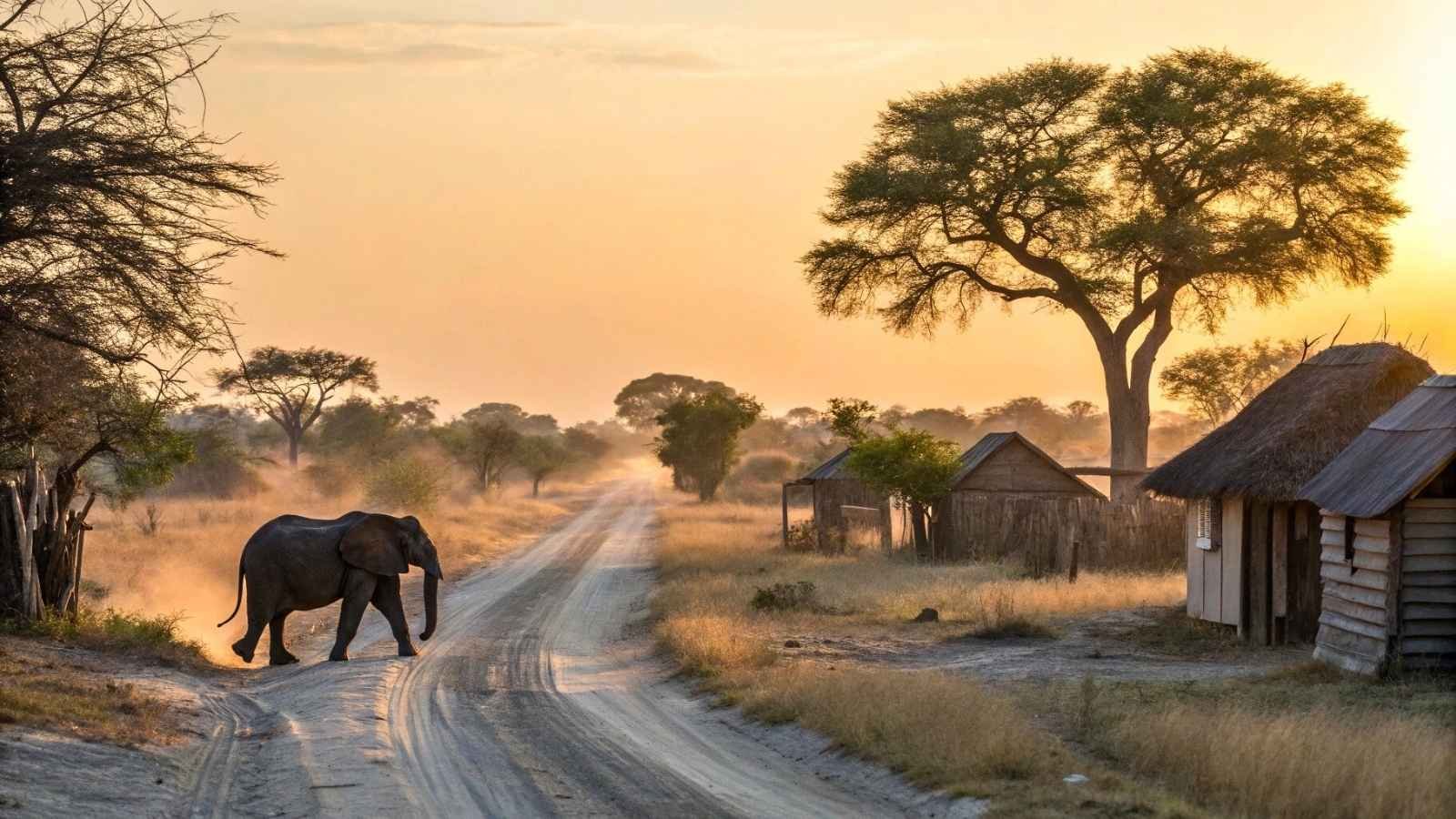
Botswana is one of Africa’s most pristine wildlife havens, and its cities—though relatively small—don’t keep nature at arm’s length. In Maun, the gateway town to the Okavango Delta, it’s not uncommon for elephants to wander through the streets or buffalo to graze just outside your hotel fence.
The country’s commitment to conservation means wildlife corridors are protected, even near urban areas. That means zebras and impalas often cut through neighborhoods, and warthogs jog around town like they’re late for a meeting.
There’s something quietly magical about walking to a local shop and seeing wildlife just going about their day—no cages, no barriers, just a gentle coexistence between humans and animals.
Quick Facts:
- Best Months to Visit: May to October (dry season; animals gather around water sources)
- Most Common Urban Wildlife: Elephants, zebras, warthogs, impalas
- Cities with Frequent Sightings: Maun, Kasane
- Travel Tip: Always keep your distance—especially from elephants. They may look chill, but they have moods.
9. Brazil

Brazil’s wild side doesn’t stay in the jungle. In cities like Rio de Janeiro, it spills right into urban life. With the Tijuca Forest sitting in the heart of the city, it’s not unusual to see capuchin monkeys swinging across electrical lines or coatis rummaging in park bins.
In Brasília and Belo Horizonte, it’s common to spot giant lizards, toucans, and even howler monkeys making surprise cameos near apartment blocks. And down south, capybaras—the world’s largest rodents—are local celebrities, often lounging beside city lakes like it’s normal (because in Brazil, it kind of is).
Brazil’s cities often feel like jungles with streetlights, where nature hasn’t been pushed out, just invited in.
Quick Facts:
- Best Months to Visit: May to October (dry season)
- Most Common Urban Wildlife: Capybaras, monkeys, coatis, toucans
- Cities with Frequent Sightings: Rio de Janeiro, Brasília, Belo Horizonte, Curitiba
- Travel Tip: Capybaras are chill, but don’t try to pet them—they’re still wild.
10. Sri Lanka
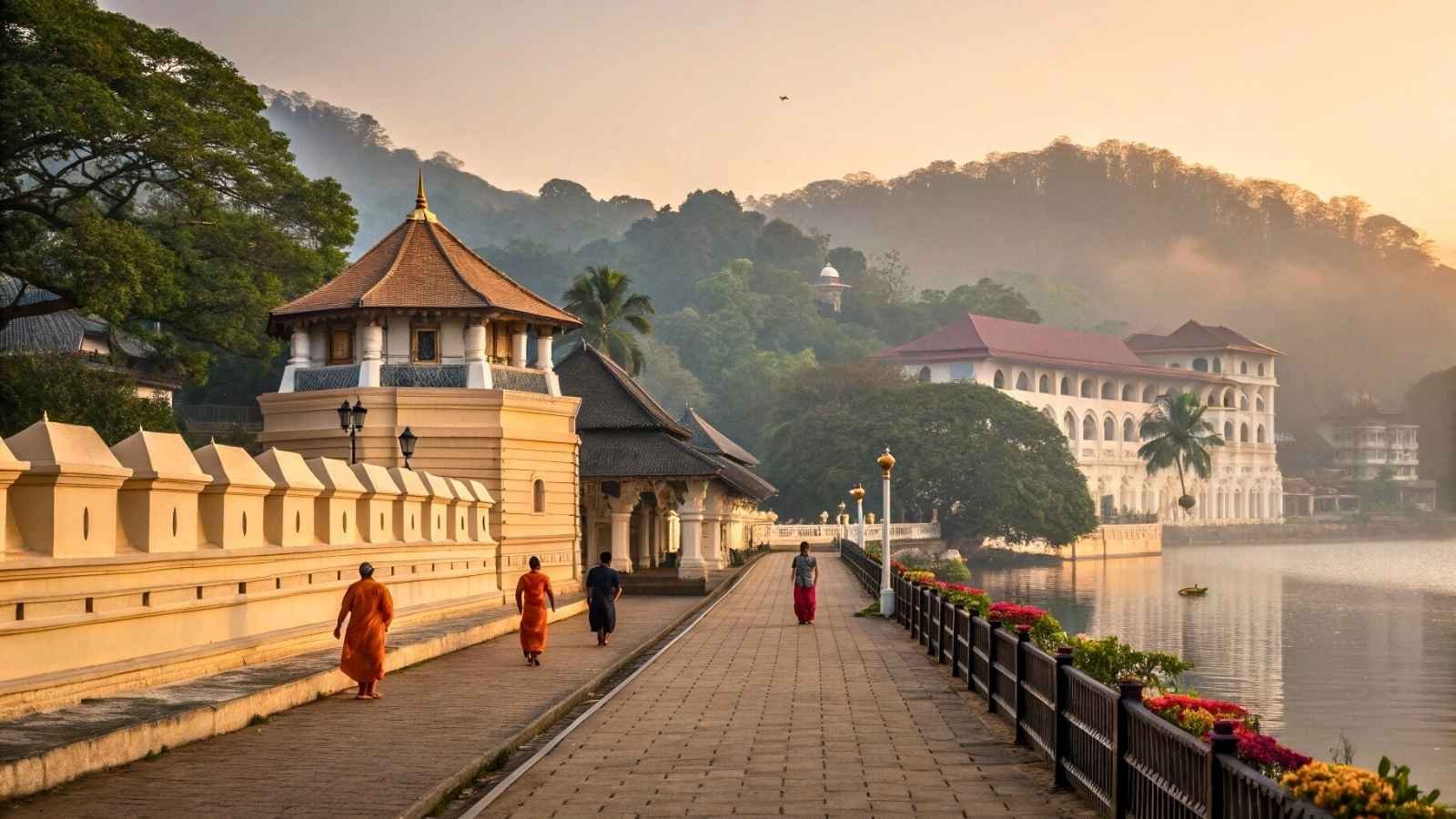
Sri Lanka’s compact geography means wildlife is never far away, even in its cities. In places like Kandy and even the outskirts of Colombo, monkeys leap across buildings and swing from power cables like it’s their playground. They’re often cheeky and sometimes downright rude—don’t leave your windows open.
In Anuradhapura, it’s not unusual to see elephants walk through roads or around temples, especially during religious festivals. And in smaller towns near national parks like Yala or Udawalawe, wild boars, peacocks, and even leopards have made surprise appearances.
Sri Lanka’s rich biodiversity spills over into daily life, giving you the sense that even the cities are just temporary guests in a very old ecosystem.
Quick Facts:
- Best Months to Visit: December to April (south and west), May to September (north and east)
- Most Common Urban Wildlife: Elephants, monkeys, peacocks, boars
- Cities with Frequent Sightings: Kandy, Anuradhapura, Tissamaharama
- Travel Tip: During temple visits, don’t feed the monkeys—it encourages aggressive behavior.
11. Norway
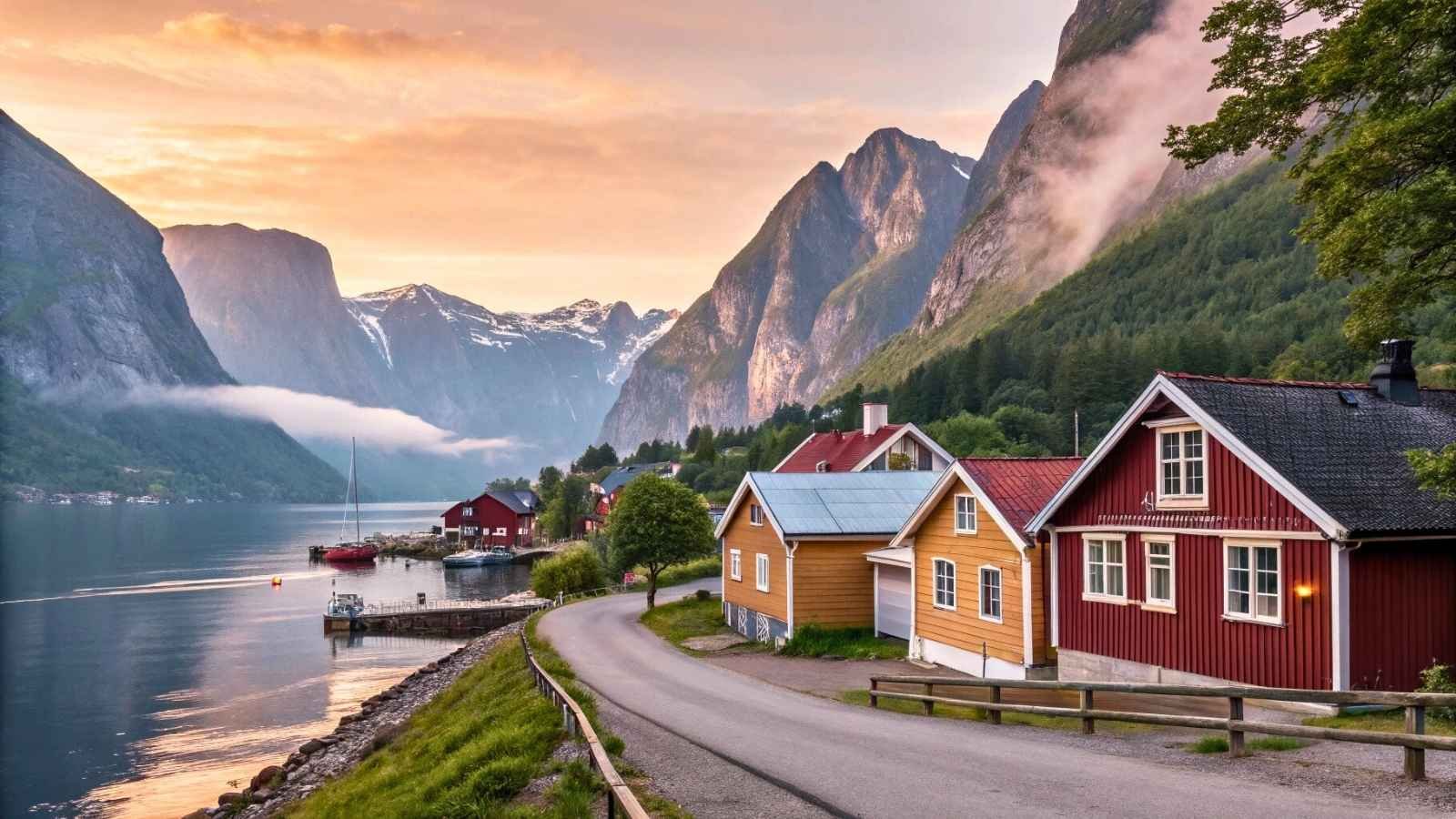
Norway isn’t just about fjords and northern lights—it’s also where urban moose are a real thing. In towns like Tromsø and even parts of Oslo, moose have been spotted wandering through neighborhoods, especially in winter when food is scarce. They munch on garden hedges, stroll along quiet roads, and sometimes just plant themselves in the middle of roundabouts.
Less dramatically, foxes and reindeer also wander close to human areas, particularly in the northern Sami regions. Locals are used to this icy intrusion of nature—it’s just part of daily life when you live this close to the wild.
Norway’s version of urban safari is more serene than chaotic, but spotting a towering moose from your window? That’ll wake you up quicker than any cup of coffee.
Quick Facts:
- Best Months to Visit: December to March (moose and reindeer are more visible)
- Most Common Urban Wildlife: Moose, reindeer, red foxes
- Cities with Frequent Sightings: Tromsø, Alta, parts of Oslo outskirts
- Travel Tip: Don’t honk at a moose—they don’t care, and they’re much bigger than your car.
12. Namibia
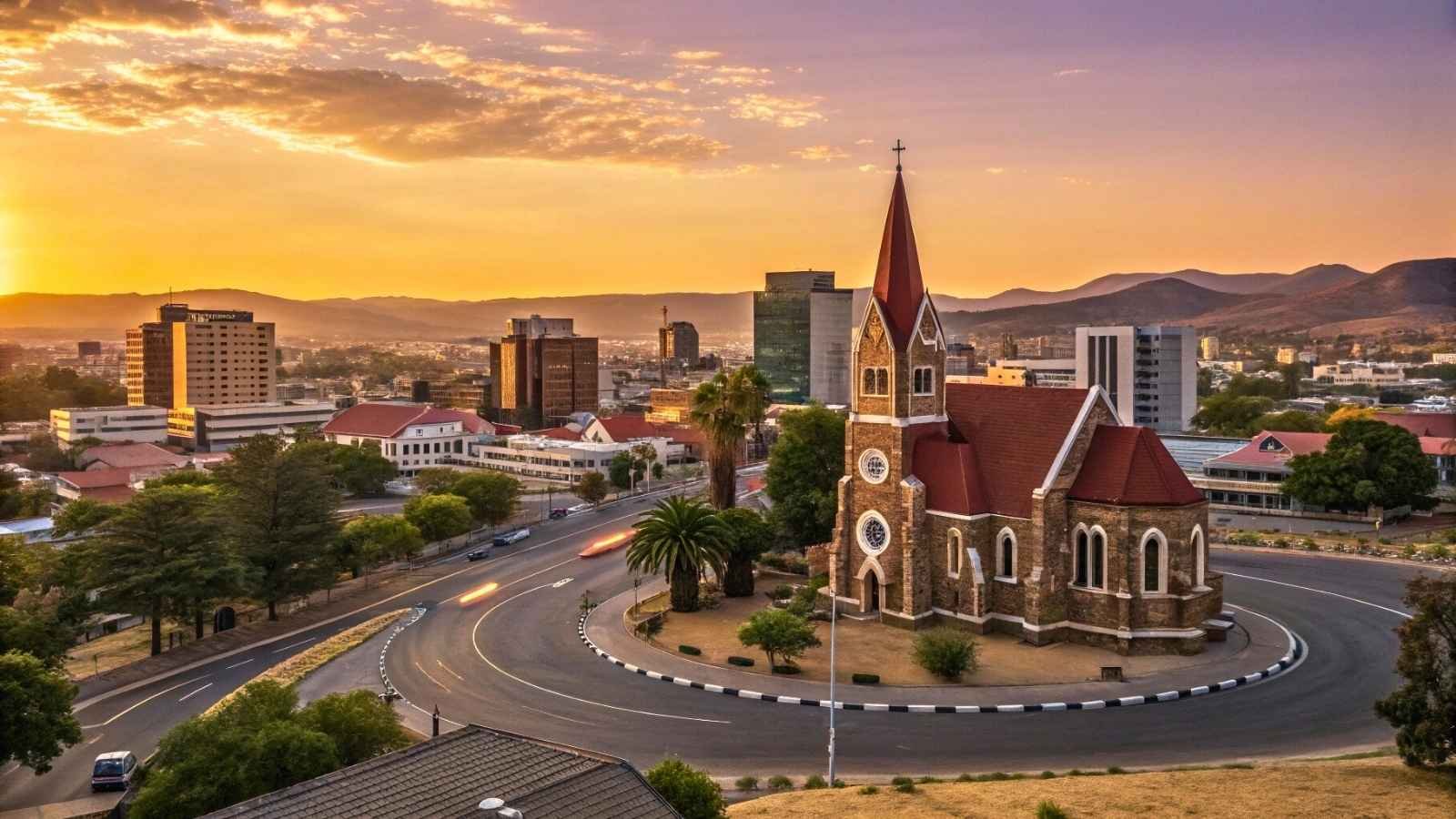
Namibia’s vast landscapes don’t stop wild animals from poking into urban life—especially in coastal cities like Swakopmund or Walvis Bay. Seals gather on piers by the hundreds, and flamingos flock to the lagoon like some pastel-pink parade. Meanwhile, jackals and springboks are known to skirt around the edges of towns looking for scraps or shade.
In the capital, Windhoek, it’s not rare to see troops of baboons descending into residential areas, particularly those near hilly or forested terrain. And during the dry season, porcupines and warthogs make surprise nighttime visits.
Namibia delivers wildlife with a side of surreal, where your morning commute might involve yielding to a waddling seal or watching flamingos block the road like a feathered protest.
Quick Facts:
- Best Months to Visit: May to October (dry season and ideal for wildlife visibility)
- Most Common Urban Wildlife: Seals, flamingos, baboons, jackals, porcupines
- Cities with Frequent Sightings: Swakopmund, Walvis Bay, Windhoek
- Travel Tip: If staying near the coast, seal colonies are loud and smell… distinctive. Bring earplugs and an open mind.
13. Indonesia

Indonesia’s cities are full of contrasts—modern malls meet ancient temples, and wildlife never stays far behind. On the island of Bali, monkeys frequently roam Ubud’s town center, especially near the Sacred Monkey Forest. They’re bold, acrobatic, and uninterested in your personal space.
Elsewhere, like in Sulawesi or Java, monitor lizards and civets are urban lurkers. They’re more shy than monkeys but no less shocking when spotted near homes or small markets. And in some coastal areas, snakes have been seen slithering across roads after heavy rains—unsettling, yes, but not uncommon.
Indonesia’s wild visitors range from the adorable to the spine-tingling, creating a sense that nature hasn’t just been preserved—it’s persistent.
Quick Facts:
- Best Months to Visit: April to October (dry season)
- Most Common Urban Wildlife: Monkeys, monitor lizards, civets, snakes
- Cities with Frequent Sightings: Ubud, Yogyakarta, Makassar
- Travel Tip: Keep shiny items secured—monkeys love stealing sunglasses and phones.
14. New Zealand

New Zealand’s wildlife is more whimsical than threatening, but its towns are still full of surprising guests. In coastal cities like Dunedin, you might wake up to sea lions napping on sidewalks or crashing into cafes—no joke. The city’s wildlife rangers are used to relocating the chubby giants when they barge into odd places.
In the southern reaches, penguins casually waddle through harbors and parking lots, while in forested towns, you’ll hear the distinct calls of kiwis and tui birds, often at dusk. The harmony between nature and city is so well maintained here that animals aren’t visitors—they’re neighbors.
New Zealand’s urban animal encounters are endearing, strange, and often funny—a gentle reminder that you’re just a guest in their world.
Quick Facts:
- Best Months to Visit: November to March (summer season)
- Most Common Urban Wildlife: Sea lions, penguins, native birds like tui and kea
- Cities with Frequent Sightings: Dunedin, Wellington, Invercargill
- Travel Tip: Don’t approach sea lions—they may look lazy, but they can move fast and bite if provoked.
15. United States
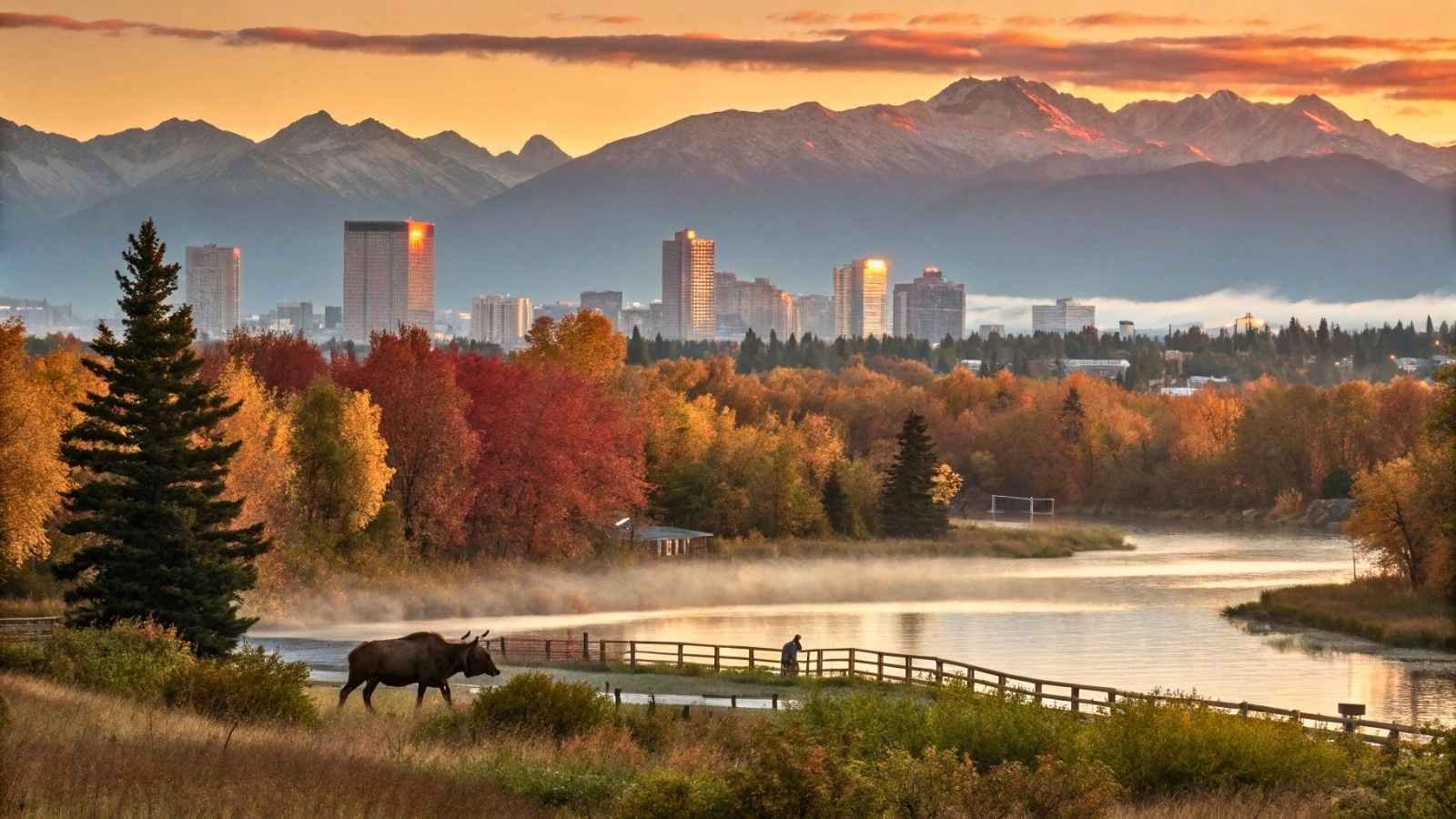
In the U.S., urban wildlife often slips through the cracks—literally and figuratively. In cities like Chicago and Los Angeles, coyotes have adapted to city life so well that they’ve been caught on security cams calmly walking into convenience stores. In Florida, alligators sunbathe in suburban driveways or swim through golf course lakes like they paid for it.
In Alaska, moose walk through Anchorage as if it’s just part of their migration path. And in some desert towns, bobcats nap in people’s backyards or climb into trees like oversized housecats.
The U.S. experience is varied: sometimes hilarious, sometimes dangerous, but always a testament to how wildlife finds its way—even in the concrete jungle.
Quick Facts:
- Best Months to Visit: Varies by region (spring and fall are safest bets)
- Most Common Urban Wildlife: Coyotes, raccoons, moose, alligators, bobcats
- Cities with Frequent Sightings: Anchorage, Miami suburbs, Los Angeles, Chicago, Phoenix
- Travel Tip: If you see a wild animal in a city, don’t try to film it up close. Urban doesn’t mean tame.






